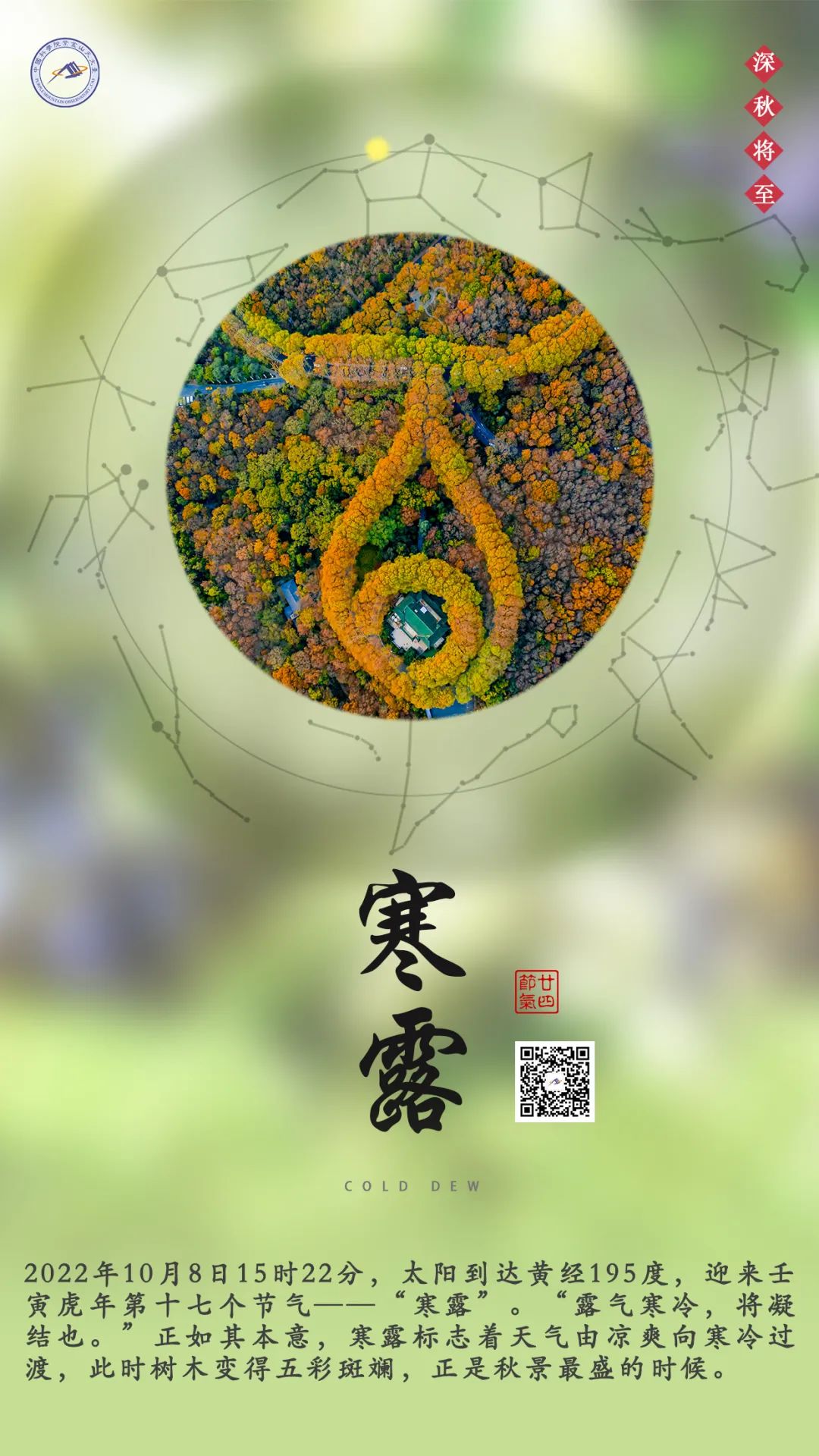“九月寒露白,六關秋草黃。”《中國天文年歷》顯示,10月8日15時22分迎來2022年“寒露”節氣。

天象預報
**寒露——**霜降
太陽
在室女座運行。目前太陽活動性不強,太陽正面有數群小黑子,可通過帶減光的望遠鏡觀測。
月亮
10月18日下弦月,與雙子座中的北河二、北河三近似排成一條直線,午夜后從東北方向升起。
水星
在室女座順行。10月9日,水星西大距,日距角為18度,日出之前可以在東方的低空觀測。
金星
在室女座順行。10月23日,金星上合日,之后由“啟明星”變為“長庚星”,年底左右將閃耀在黃昏后的天宇。
火星
在金牛座順行。亮度逐漸增加,夜晚21時左右升起,黎明前都可以觀測。
木星
在雙魚座逆行。入夜后,明亮的木星即從東方升起,整夜都可以觀測。
土星
在摩羯座逆行,10月23日土星留,之后轉為順行。入夜后出現在東南方夜空,后半夜從西南方落下。
小知識

水星是離太陽最近的行星,軌道半長軸約為5800萬千米(0.39天文單位)公轉周期約88日。水星的軌道偏心率達到0.2056,軌道傾角相對黃道為7°,都是八大行星中最大的。較大的偏心率使得水星在近日點和遠日點離太陽的距離分別約為4600萬千米(0.31天文單位)和7000萬千米(0.47天文單位),因此從地球上看去,水星在西大距或者東大距時,與太陽的角距離在17.9°至27.8°之間。
水星也是太陽系中體積和質量最小的行星,它的平均直徑為4880千米,是地球的0.38倍,質量是地球的0.055倍。水星的平均密度為5.43g/cm3,在4顆類地行星中僅次于地球(5.52g/cm3),如果忽略重力壓縮效應,那么水星的密度將是最大的。
水星的橢圓形軌道相對于背景星空是緩慢旋轉著的,這種現象被稱為近日點進動。但是在19世紀,天文學家精密的觀測及計算表明,水星近日點進動的觀測數據與經典力學的理論計算之間存在一個雖然微小但很確鑿的偏差。去除其他行星的引力攝動及太陽的扁度等因素之后,仍有約每100年 43″——相當于圓周的十萬分之三的進動無法解釋。這道難題直到1915 年才由愛因斯坦的廣義相對論所解決, 成為廣義相對論的三大經典驗證之一。
The Cold Dew

The seventeenth solar term of 2022, Cold Dew(Hanlu in Chinese), falls on October 8th at 15:22(Beijing Time), when the longitude of the sun reaches 195°. From Cold Dew, the weather turns from cool to cold. During this time, the forest becomes colourful, creating the most splendid autumn scenery of the year.
Astronomical Forecast
Cold Dew——Frost's Descent
⊙
The Sun
The sun travels in Virgo. Currently, solar activity is low, with a few groups of sunspots on its surface. They can be observed through a telescope with a solar filter.
?
The Moon
On October 18th, the moon is in the last quarter. It is nearly collinear with Castor and Pollux In Gemini. It rises after midnight in the north-eastern sky.
?
Mercury
Mercury travels in prograde motion in Virgo. It is at the greatest western elongation on October 9th, with an 18° angular distance from the sun. It can be observed in the lower eastern sky before sunrise.
♀
Venus
Venus travels in prograde motion in Virgo. It is at superior conjunction with the Sun on October 23rd, after which, it turns from a morning star to an evening star. Venus will be shining in the sky after sunset during the end of the year.
♂
Mars
Mars travels in prograde motion in Taurus. Its magnitude continues to increase. It will rise around 9 o'clock in the evening and can be observed before dawn.
?
Jupiter
Jupiter travels in retrograde motion in Pisces. In the evening, it rises from the east and can be observed all night.
?
Saturn
Saturn travels in retrograde motion in Capricornus. It is stationary on October 23rd; then, it changes into prograde motion. In the evening, it rises in the south-eastern sky, and falls in the south-western sky later in the night.
輪值主編:李國亮
制作、編輯:王科超
英文版設計:朱曼清
(金陵中學)ZHU manqing


 科普中國公眾號
科普中國公眾號
 科普中國微博
科普中國微博

 幫助
幫助
 紫金山天文臺
紫金山天文臺 